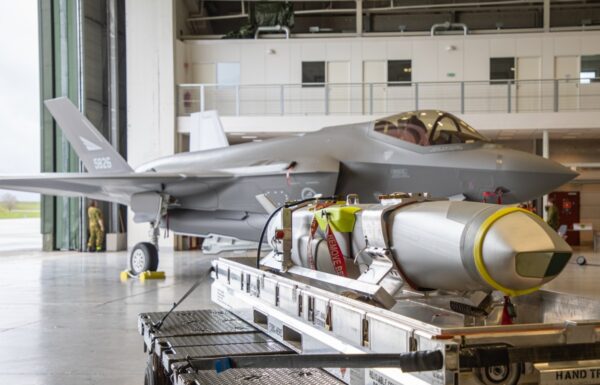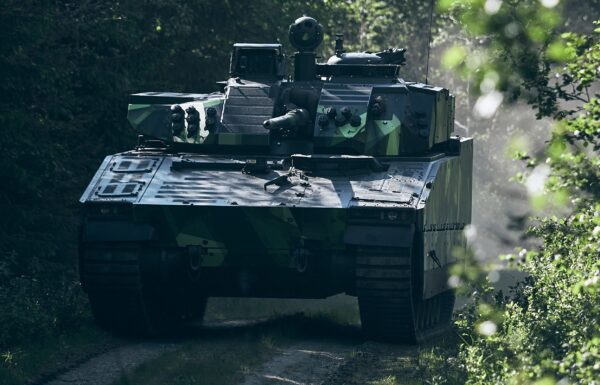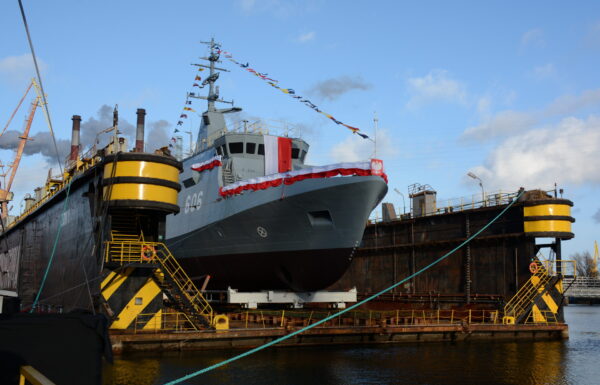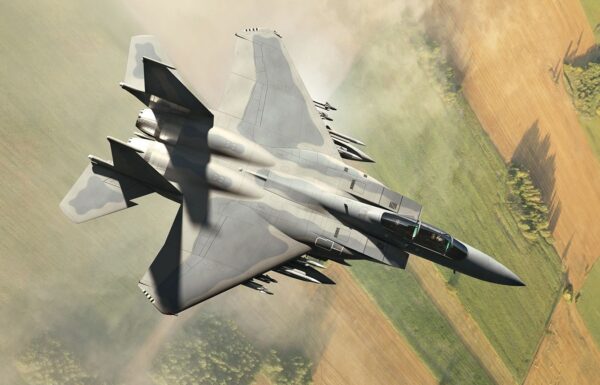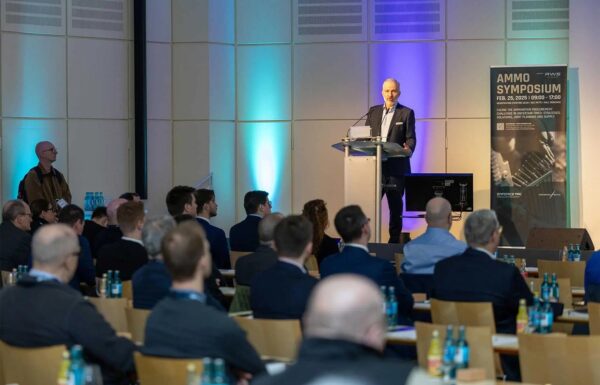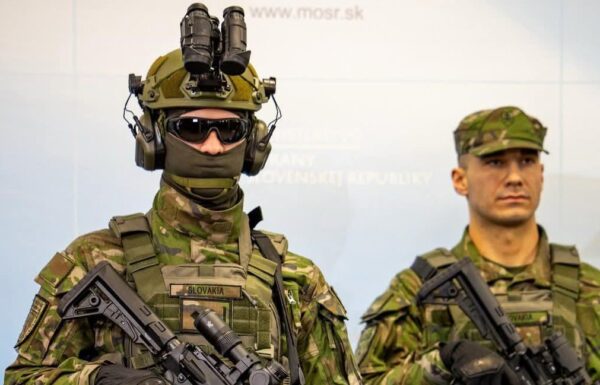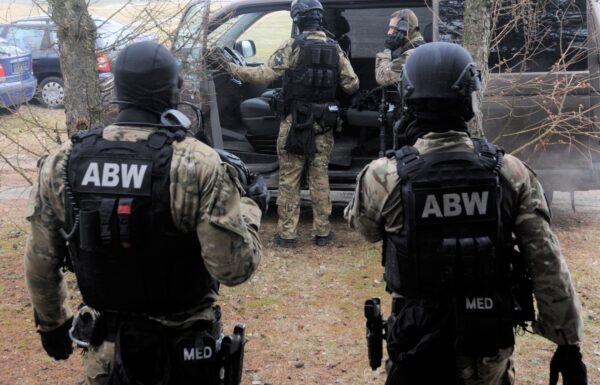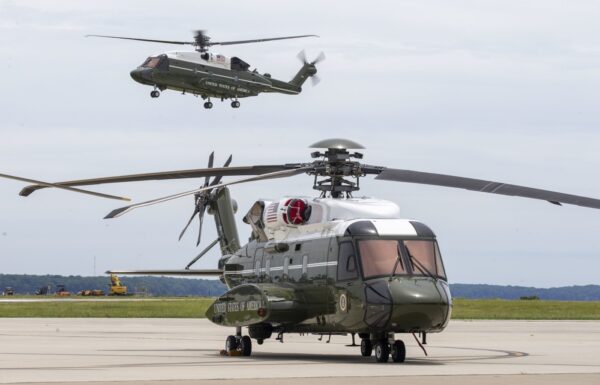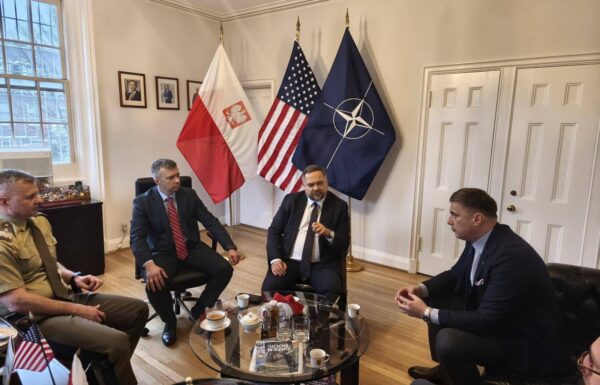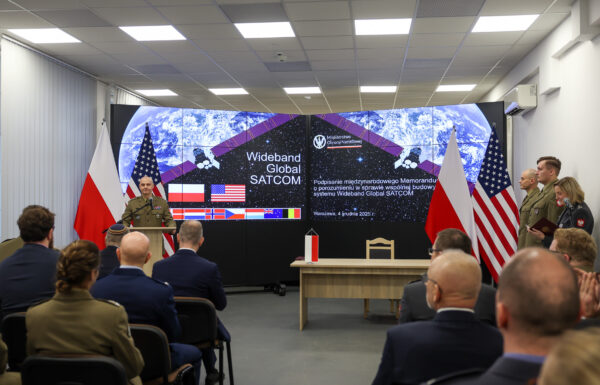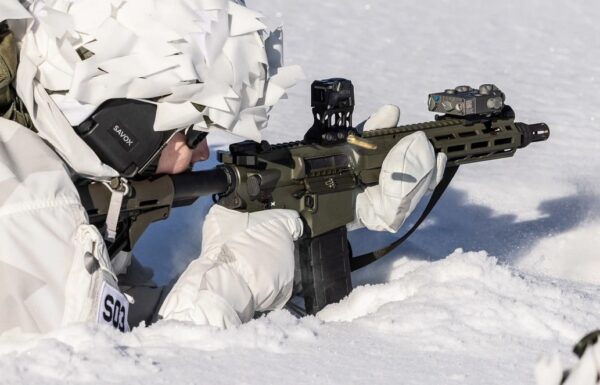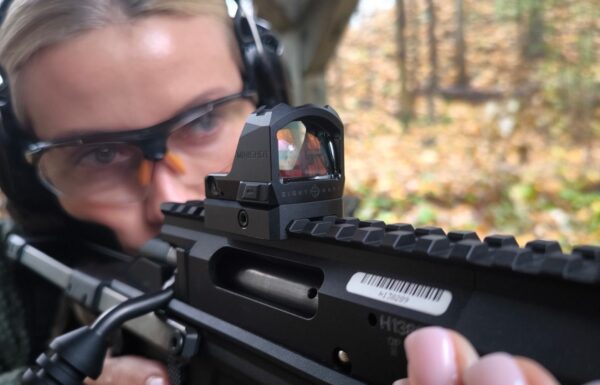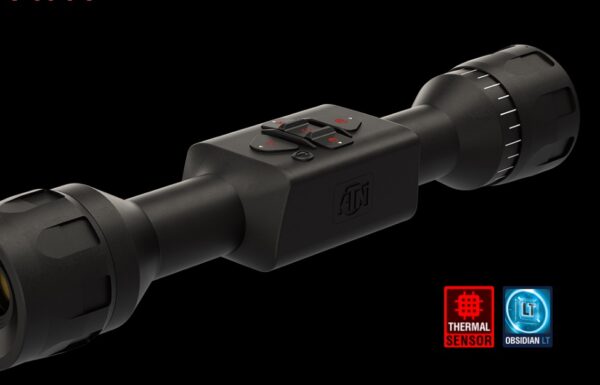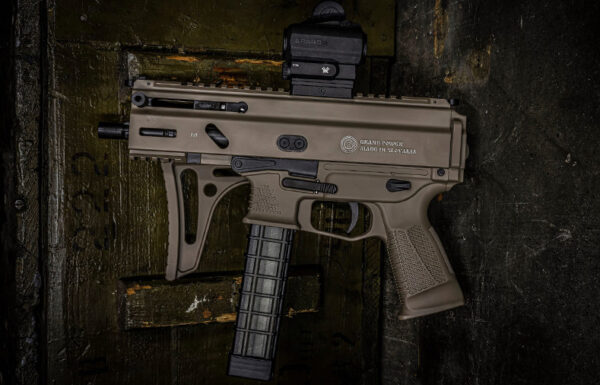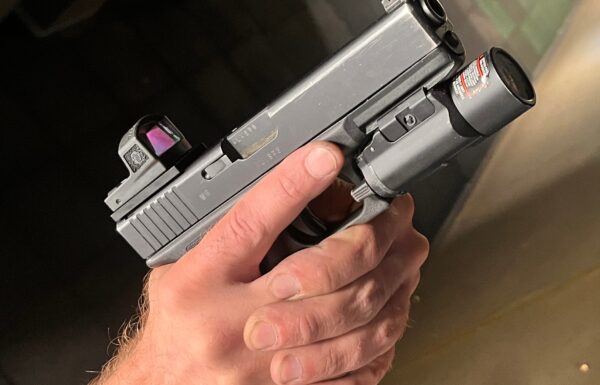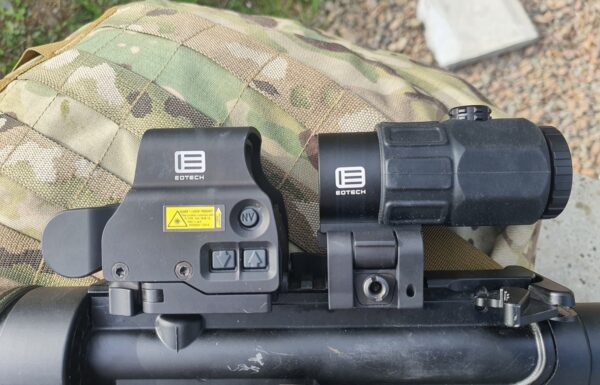Fanfares sounded and champagne corks popped in the Presidential Palace. Former and current heads of the Ministry of Defense are patting themselves on the back because the numbers show that the Polish Armed Forces are the third largest army in NATO. Wonderful! And so what?
Not much, because in the garage still stands the over forty-year-old BWP-1 infantry fighting vehicle, the modernization of Leopard tanks drags on interminably, there is one guided anti-tank missile for every 700 soldiers, and command nodes are deployed on MT-LB and Star 266 trucks. Of course, provided they start. Civil Defense doesn’t exist, but at least we can be proud that the ORP Orzeł submarine has surfaced.
 Photo: corporal Sławomir Kozioł, 18th Mechanized Division
Photo: corporal Sławomir Kozioł, 18th Mechanized Division
NATO raport and Global Firepower ranking
In the tables, officials concluded that the Polish army has 216,000 soldiers, of which nearly 139,500 are professional soldiers, making it the third-largest NATO army after the Turkish army, which has 481,000 personnel, and the American army, with 1.3 million soldiers. The joy over this is as absurd as being 15th in the Global Firepower ranking. Yes, it looks nice in newspaper headlines and on news service tickers, but it has little to do with reality
For example, Pakistan is in the top ten ranking of the world’s strongest air forces. Its strength is determined by about 140 Chengdu F-7s, which are Chinese copies of the MiG-21. They have Western avionics and electronic equipment, but they are currently archaic machines with virtually zero chances of success in a confrontation with modern aircraft.
Eighty, the number of F-16s may sounds impressive, but only 18 of them are relatively modern Block 52+ machines. The rest are early production series aircraft that have not been widely modernized. The count is also boosted by the 65 multi-role JF-17 Thunder aircraft that the Pakistanis have, as well as the Mirage III and V, which have been in service for 50 years, and their modernization has been limited to avionics upgrades.
Morocco, on the other hand, is a land power. Their position is mainly determined by over 1,000 M48 and M60 Patton tanks owned. The former are from the 1950s, while the latter are a decade younger. At least the T-72B and BK tanks they bought from Belarus and the 384 Abrams tanks, including several dozen of the latest production versions, can be considered modern.
On the water, Colombia is a true power with 76 surface ships. However, more than 50 of them are river vessels! Nevertheless, they still count in the quantitative report, which elevated Colombia to the second tier. Among their blue-water vessels, only four patrol boats can be considered modern. The rest are used ships purchased from Germany and South Korea.
Interestingly, the archaic fleet of North Korea is also in the top ten. This is due to nearly 70 submarines. It doesn’t matter that 20 of them are Project 633 submarines built in China, the newest of which entered service in 1975, and most are unusable due to a lack of parts. The majority are Korean Sang-O type vessels. These are small coastal submarines with a 15-person crew that have been entering service since 1991. There are as many as 40 of them.
Do you understand where I am going with this?
 Photo: Polish Ministry Of National Defense
Photo: Polish Ministry Of National Defense
Numbers will tell the truth
The head of the National Security Bureau, major Dr. Jacek Siewiera, felt devastated because NATO “publishes statistics that, thanks to the commitment of the State and Citizens, become a source of pride for us among our allies. Meanwhile, on Twitter, there is grumbling and lethargy“.
Nie było mnie tu 5 godzin. Czytam i jestem zdruzgotany. NATO publikuje statystyki, które dzięki zaangażowaniu Państwa i Obywateli stają się dla nas powodem do dumy wśród sojuszników. Tymczasem w na tłiterku malkontenctwo i zgnusnienie. I to w czyim wydaniu?! Komentatorów, którzy…
— Jacek Siewiera (@JacekSiewiera) July 16, 2024
Not grumbling and lethargy, but realism, which politicians seem to ignore. It is surprising to see them putting on a brave face regarding the mediocre state of the Armed Forces, especially since the head of the National Security Bureau has repeatedly shown that he knows the military well and can speak sensibly about it. Meanwhile, he is proud, albeit with a grain of salt, of the reality observed during reserve exercises.
Indeed, we can be pleased with the increasing defense expenditures and the phased modernization of the Armed Forces. We can and should be happy with the Gladius program, the Miecznik missile frigates, the Kormoran II mine hunters, the planned production of K2 tanks, and the Borsuk infantry fighting vehicles with ZSSW-30 remote turrets. With the excellent locally-made Piorun MANPADS, Krab howitzers, Rak mortars, and the first entirely Polish-made assault rifle, the Grot. But should we be happy that Poland has the third-largest army in NATO? No. Because quantity does not equate to quality.
We can be happy that Poland is first in NATO when it comes to the percentage of GDP allocated to the military. It is much worse in absolute numbers. According to NATO data, defense spending will amount to around $35 billion this year. Of this, about $8 billion is allocated for the purchase of new equipment. However, personnel expenses, meaning the salaries of professional soldiers, are expected to amount to $6.5 billion, and $4.7 billion will go to cash benefits, including pensions. As Deputy Minister of National Defense Cezary Tomczyk stated, these funds will allow for the development of the Polish Armed Forces.
Germany, on the other hand, spends nearly $100 billion, of which $66 billion comes directly from the defense budget. The French spend $64 billion, and the British, despite having an army half the size, plan to spend over $72 billion this year. In all these countries, experts say it is too little to expand their armed forces. In the United Kingdom, nearly $22 billion is planned to be spent on modernization alone this year, with almost the same amount allocated for repairs and the purchase of effectors.
Germany estimates that they currently lack about $30 billion to properly expand the capabilities of their army. They would then spend four times more than Poland while having a smaller army in terms of numbers.
It feels even sadder when we look at spending on military research and development. In 2024, the Ministry of National Defense planned a total of only $340 million. At the same time, the U.S. Department of Defense allocated $143 billion more for research and development. The British around $4 billion. However, we can find some consolation in the fact that the Czechs plan to spend less – $190 million.
 Photo: senior staff warrant officer Rafał Mniedło, 11th Armored Cavalry Division
Photo: senior staff warrant officer Rafał Mniedło, 11th Armored Cavalry Division
Is there anything to be happy about?
Small steps should be encouraging, but once again, the modernization of the army is starting from the wrong end. Just like during the times of Marshal Śmigły-Rydz (translator’s note: the Marshal of Poland in years 1935-39 and commander-in-chief during the German invasion of Poland in 1939). What good was a million-strong army if it was not suited to the needs of the contemporary battlefield and the modernization was delayed by 5-10 years? Just like today.
So far, the army has managed to fill most of the existing vacancies. However, there is still a shortage of officers and specialists. The military has not yet received some of the newly produced modern equipment because there is a lack of trained soldiers with specific specializations—electronics technicians, communications specialists, and programmers. These professionals choose the civilian sector. Even if they graduate from military academies, they leave after serving the minimum required by law.
Currently, the Territorial Defense Forces alone are short of about 1,300 instructors who could train volunteers. High school graduates are not eager to enroll in military academies, and for experienced non-commissioned officers, the path to officer promotion is very difficult. Additionally, producing officers through the Academic Legion does not guarantee quality. And what about the promised new divisions? Specialists need to be trained from the start because they cannot be taken from other units.
In addition, there is still not enough suitable equipment—the increase in Krab production capacity was mishandled. The Borsuks will be available in a few years, and we have to keep our fingers crossed that the heritage conservators will not send all the BWP-1s to museums. Missile frigates are missile-equipped in name only, as they do not have even have a single fire unit between the two of them. The one-submarine division is on the verge of extinction, and the air force is still waiting for the F-16 MLU.
Can we be happy at all?
We can be happy because small steps are leading to some changes, but it is ridiculous to celebrate that the Polish army is the third largest in NATO! It is reminiscent of North Korea, which boasts about having one of the largest submarine fleets in the world.
We will truly have a reason to celebrate when modern multi-role aircraft enter the Polish Armed Forces, instead of light substitutes, when the submarine division is a division not only in name, when the Baltic Sea is patrolled by multi-role missile frigates and not oversized gunboats. We can celebrate when a company commander does not have to wonder if the BWP will start, if the Honker’s axle won’t fall off, and when a soldier receives the proper personal equipment and does not have to buy it privately.


